#Ecole Software
Explore tagged Tumblr posts
Text

97 notes
·
View notes
Text
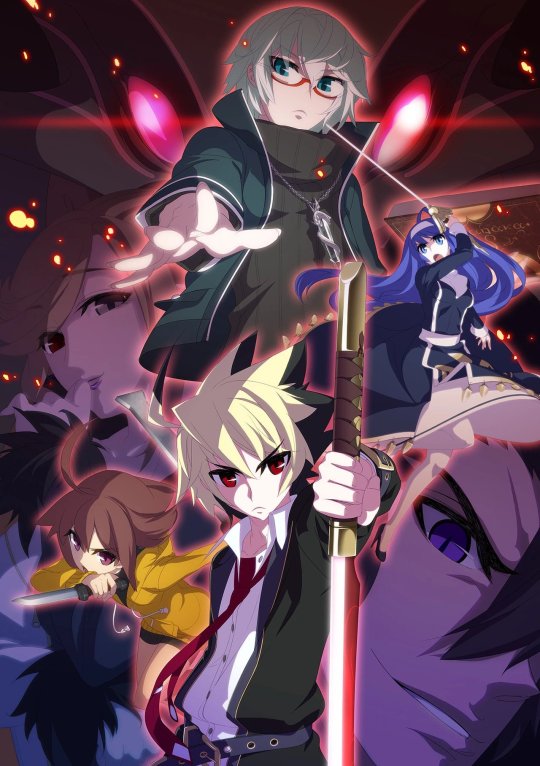
10 years ago today, Under Night In-Birth Exe:Late was originally released at arcades at JP. It was developed by French-Bread/Ecole Software and published by Sega.
#fighting games#fighting game#under night in-birth#under night in-birth exe late#uniel#arcades#french bread#ecole software#sega
13 notes
·
View notes
Text
dengeki bunko: fighting climax
memories engraved
0 notes
Text
Sega Saturn - Death Crimson
Title: Death Crimson / デスクリムゾン
Developer/Publisher: Ecole Software Corporation
Release date: 9 August 1996
Catalogue No.: T-23202G
Genre: Light Gun Shooting


You may have seen Death Crimson 2 on the Dreamcast and maybe even Death Crimson OX, which is actually not too bad, but have you ever seen Death Crimson 1 on the Saturn? If not, then think yourself lucky because this is THE WORST looking Saturn game ever. Not only is it the worst looking game but also sounds and plays like shit. So much in fact that in Japan this game received the title of Kusosoft (Kusoge) which basically means Shit Game! But here is the odd thing. Death Crimson became so famous for being so shit that every copy of the original print sold out!!
These days Death Crimson is a highly regarded cult game for the Saturn with copies selling for over 10,000 yen at one point in time. Anyway, the bottom line is that this game is pure completely awful. It's way too hard for a start. This is mainly due to poor collision detection, indistinguishable sprites and polygons and shear impossible targets.
Now I don't normally do this for games here but just check out a few of the screen shots. I thought this was a joke release first time I saw it.
As you can tell from the title screen, this game is just poor, and that CG monster has bugger all to do with the actual game! Don't forget to check out the in-game video from the link below. Then you'll see just how awful this game looks.


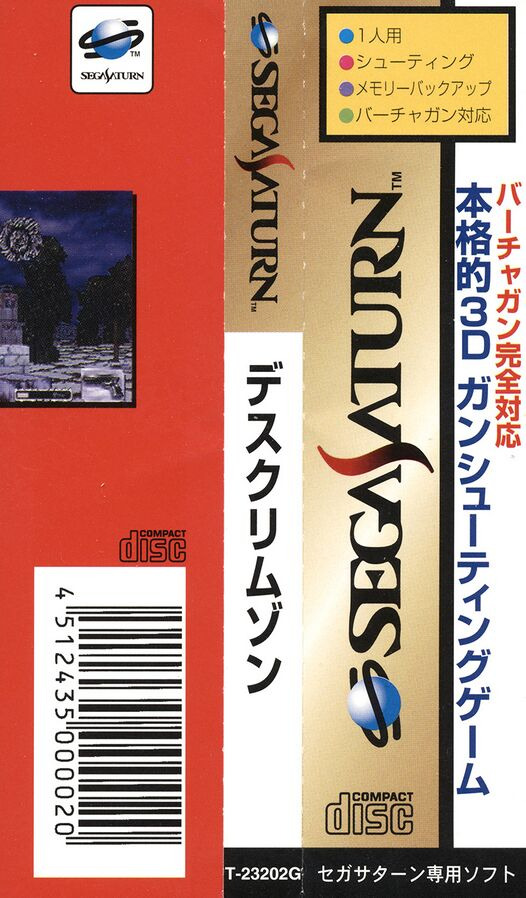
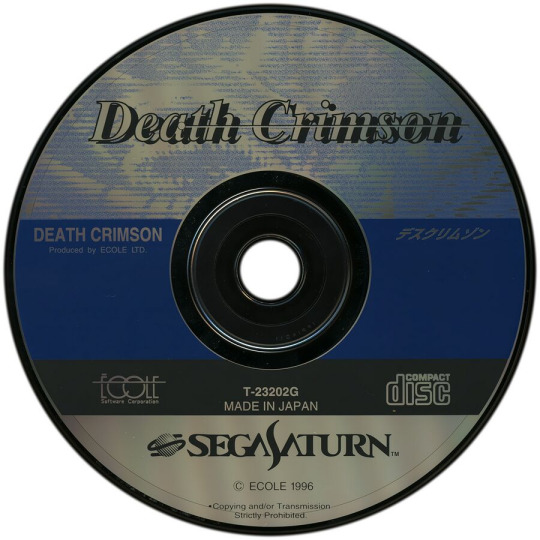

youtube
3 notes
·
View notes
Text

Having another DEATH CRIMSON moment but every time I see this character my brain just goes "oh that's Sion"
But like okay this is a weird rabbit hole you think. Death Crimson 2 is an obscure fucking light rail shooter, sequel to a Really Bad Saturn game, developed by Ecole Software, a developer no one has ever heard of. And yeah to be fair that's largely where I left it.
But like, okay this is going to get a little weirder, but Ecole and French Bread clearly have a working relationship. It probably started somewhere around 2005 when Act Cadenza was released because, surprise, Ecole helped develop the arcade version of Act Cadenza AND published the PS2 version. By and large most of the games Ecole are credited on are games from French Bread too. Which is an interesting working relationship if nothing else.
Sadly there's nothing really in English about Death Crimson 2 out there. There's a pretty bare bones walkthrough from 2003 and an IGN article for 1999 talking about how the female lead above, Yuri, had an email address you could send emails too. So I have no idea what her character even is like in the game? It's JP only outside of Death Crimson OX+ which doesn't have any of the story mode.
So there's a decent shot this is just pattern recognition brain. They do look really similar to each other, but it's entirely possible its coincidence. But if there's a fucking interview from Takeuchi and Nasu reminiscing over this game, I also really wouldn't be surprised.
11 notes
·
View notes
Text
So I was playing this Sega Naomi GD-Rom game called Melty Blood: Act Cadenza Version B (メルティブラッド アクト カデンツァ Ver.B) which is a fighting game developed by TYPE-MOON and Ecole Software and was published by Sega, it was released on Arcades in December 26, 2006 and version B2 was released on March 20, 2007. So I had this idea were Sparks from SuperKitties and Koppa from Shiren the Wanderer meeting Len and Kohaku from Melty Blood, mostly because I think it would be really cute seeing Sparks and Koppa meeting Len and Kohaku.
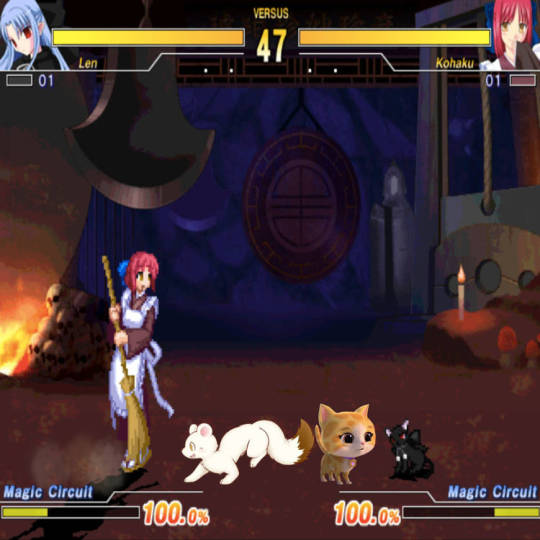
#superkitties#Melty Blood#Melty Blood Act Cadenza#ecole#type moon#sega naomi#Sega Naomi GD-ROM#Sega Naomi GD ROM#メルティブラッド#風来のシレン#スーパーキティ#shiren#shiren the wanderer#シレン
3 notes
·
View notes
Text
Fwd: Course: Online.InferenceWithBEAST2.Nov18-29
Begin forwarded message: > From: [email protected] > Subject: Course: Online.InferenceWithBEAST2.Nov18-29 > Date: 13 November 2024 at 05:28:53 GMT > To: [email protected] > > > Dear colleagues, > > There are a few slots available for the online course "Bayesian > phylogenetic inference with BEAST2". > > Online live sessions on November 18th, 20th, 22nd, 25th, 27th, and 29th, > 2024, from 15:00 to 18:30 (Madrid time zone) > > Instructors: Dr. Jo�lle Barido-Sottani [1] (Ecole Normale Sup�rieure de > Paris, France) and Dr. Bethany Allen [2] (ETH Zurich, Switzerland) > > Course Overview: > > Bayesian phylogenetic inference is a powerful tool for reconstructing > phylogenies while accounting for complex evolutionary dynamics. It > allows prior knowledge to be integrated into the inference, and also > provides a detailed picture of the uncertainty present in the dataset. > However, the number and complexity of the available models and options > can be daunting for users and can make it difficult to apply inference > tools effectively in practice. > In this workshop, participants will learn the theoretical concepts > underlying the different models involved in Bayesian phylogenetic > inference, and get hands-on experience using these models in BEAST2. > Particular attention will be given to more complex tree models, such as > the fossilized birth-death model used to integrate past information into > phylogenies, as well as rate-heterogeneous models which allow for > variations in evolutionary dynamics across clades. Finally, the course > will give practical information on setting up and troubleshooting > analyses in BEAST2. > > Registration and more information: > https://ift.tt/jx0XyTw > > Best wishes > > Sole > > > Soledad De Esteban-Trivigno, PhD > Director > Transmitting Science > https://ift.tt/y1fJVbc > > Twitter @SoleDeEsteban > Orcid: https://ift.tt/TcWXyRI > > Under the provisions of current regulations on the protection of > personal data, Regulation (EU) 2016/679 of 27 April 2016 (GDPR), we > inform you that personal data and email address, collected from the data > subject will be used by TRANSMITTING SCIENCE SL to manage communications > through email and properly manage the professional relationship with > you. The data are obtained based on a contractual relationship or the > legitimate interest of the Responsible, likewise the data will be kept > as long as there is a mutual interest for it. The data will not be > communicated to third parties, except for legal obligations. We inform > you that you can request detailed information on the processing as well > as exercise your rights of access, rectification, portability and > deletion of your data and those of limitation and opposition to its > treatment by contacting Calle Gardenia, 2 Urb. Can Claramunt de Piera > CP: 08784 (Barcelona) or sending an email to > [email protected] or > https://ift.tt/kZEuK5C. If you consider that > the processing does not comply with current legislation, you can > complain with the supervisory authority at www. aepd.es . > Confidentiality. - The content of this communication, as well as that of > all the attached documentation, is confidential and is addressed to the > addressee. If you are not the recipient, we request that you indicate > this to us and do not communicate its contents to third parties, > proceeding to its destruction. > Disclaimer of liability. - The sending of this communication does not > imply any obligation on the part of the sender to control the absence of > viruses, worms, Trojan horses and/or any other harmful computer program, > and it corresponds to the recipient to have the necessary hardware and > software tools to guarantee both the security of its information system > and the detection and elimination of harmful computer programs. > TRANSMITTING SCIENCE SL shall not be liable. > > Links: > > [1] > https://ift.tt/Zkvdn8r > [2] https://ift.tt/Kjlur1i > > Soledad De Esteban-Trivigno
0 notes
Text
Exploring Top Product Design Colleges in Mumbai
Mumbai, the bustling financial capital of India, is also home to a thriving hub of creative and design education. Product design, as a field, combines innovation, functionality, and aesthetics, making it one of the most sought-after disciplines in today's design-centric world. If you’re considering pursuing a career in product design, Mumbai offers some of the best colleges equipped with cutting-edge facilities, industry connections, and expert faculty. Here’s a closer look at what you can expect from product design colleges in Mumbai.
1. Comprehensive Curriculum
Product design programs in Mumbai are tailored to provide a balance between theory and practical application. Courses often include modules on design thinking, user research, materials and manufacturing, prototyping, and CAD software. This prepares students for the dynamic demands of the design industry.
2. World-Class Infrastructure
Many colleges in Mumbai are equipped with state-of-the-art design labs, 3D printing facilities, and workshops for hands-on learning. This access to modern tools ensures students can bring their creative ideas to life efficiently.
3. Experienced Faculty
Colleges in Mumbai boast faculty with years of industry experience and academic excellence. Their mentorship helps students bridge the gap between classroom learning and real-world application.
4. Industry Exposure and Internships
Mumbai's status as a metropolitan city provides ample opportunities for students to engage with the design industry. Colleges often collaborate with leading companies for internships and live projects, giving students a competitive edge.
5. Top Colleges for Product Design in Mumbai
IDC School of Design (IIT Bombay): Renowned for its cutting-edge programs and strong emphasis on innovation, IDC offers postgraduate programs in Industrial Design and Product Design.
MIT Institute of Design (Mumbai Campus): Known for its industry-aligned curriculum and emphasis on design fundamentals.
Pearl Academy Mumbai: Offers specialized programs in product and industrial design with a focus on market trends.
Ecole Intuit Lab: Known for blending traditional design principles with modern technologies, ideal for students aiming to build a strong portfolio.
6. Networking Opportunities
Mumbai’s vibrant ecosystem includes regular design expos, workshops, and seminars that connect students with professionals and alumni. These events foster networking and career growth.
7. Career Prospects
Graduates from Mumbai's design colleges find opportunities in diverse fields such as consumer electronics, automotive design, furniture design, and more. Mumbai’s proximity to industrial and corporate hubs further enhances employability.
Whether you're an aspiring designer or someone looking to enhance their skills, Mumbai's product design colleges provide an excellent platform to kickstart or elevate your career. With a mix of innovation, creativity, and academic rigor, these institutions can set you on the path to becoming a successful product designer.
For more info:-
product designing colleges in mumbai
0 notes
Text
David Fattal, Co-Founder & Chief Technical Officer at Leia – Interview Series
New Post has been published on https://thedigitalinsider.com/david-fattal-co-founder-chief-technical-officer-at-leia-interview-series/
David Fattal, Co-Founder & Chief Technical Officer at Leia – Interview Series
David Fattal is the CEO and founder at Leia, the leading provider of glasses-free 3D display hardware and software solutions. He previously spent nine years at HP Labs working on various aspects of quantum computing and photonics, and specializing in the manipulation of light at the nanoscale. He holds a PhD in Physics from Stanford University and a BS in theoretical physics from Ecole Polytechnique, France.
Fattal holds over 100 granted patents and was featured on the 2013 list of 35 Innovator under 35 by the MIT technology Review. He co-authored the text-book “Single Photon Devices and Applications” and was awarded the French National Order of Merit in 2014 for developing the “Diffractive Lightfield Backlighting” concept.
As a former research scientist at HP Labs in the Quantum Science Research Team and a specialist in Nano-Photonics, can you share some key highlights from your experience?
During my time at HP Labs, I focused on the intersection of quantum computing and nano-photonics, exploring how light manipulation at the nanoscale could revolutionize communication technologies. A key highlight was Project Leia, where we developed diffractive light field backlighting technology and advanced the field of 3D displays beyond traditional methods. This work laid the foundation for the innovative display technologies we now use at Leia Inc.
What inspired the inception of Project Leia, and how did a chance observation during a fire drill at HP Labs lead to the discovery of using nano-structures for creating holographic images?
Project Leia drew inspiration from technologies used in the field of optical interconnects, which deals with replacing electrical signals with light signals inside computer chips. During a fire drill at HP Labs, I noticed the intricate patterns formed by light passing through one of our “light on a chip” prototypes. This observation led to using nano-structures to intentionally bend light similarly, ultimately enabling the creation of holographic images. This serendipitous moment sparked the development of the diffractive light-field backlighting technology central to Leia Inc.
How does Leia Inc.’s technology convert 2D experiences into immersive 3D experiences on any device?
Leia Inc.’s technology leverages advanced optics and AI to transform 2D experiences into 3D.
Our LeiaSR optical technology can upgrade any personal device screen and give it the ability to send different images to the viewer’s left and right eyes, thereby creating a high-quality 3D effect. The 3D optics can be switched off on demand, allowing standard 2D content to display at full resolution.
Our Neural Depth Technology, powering the Immersity AI platform, can convert any 2D picture or video into 3D. Users don’t need to have a 3D display to see the effects of the conversion.
The combination of screen conversion and content conversion gives us this unique ability to create immersive 3D experiences today on any familiar device, from cell phones to computer monitors.
How does the Neural Depth Engine in the Immersity AI platform contribute to generating precise depth maps for 3D content?
The Neural Depth Engine is a state-of-the-art neural network fine-tuned on millions of 3D images collected by Leia-equipped devices in the field. Thanks to this proprietary training dataset, it can create very precise depth maps from 2D images.
The better your depth maps are, the better results you get in applications like smartphone photo enhancements and 3D imaging. If you’re familiar with the background blur (bokeh) portrait mode, then you might have an unknown appreciation for depth maps.
Depth maps are also used for things like photogrammetry, creating 3D models of real-world objects from multiple photographs, and can also be used in medical imaging.
What industries could benefit the most from Leia Inc.’s 2D-to-3D conversion technology, and how?
Several industries can benefit significantly from our 2D-to-3D conversion technology. Social media creators and influencers can enhance their content by offering more engaging experiences that connect them with their community. The media and advertising industry can create more captivating advertisements that stand out from their competition. Filmmakers and game developers can provide audiences with a richer and more immersive visual experience. Additionally, the design industry, including image and video editing professionals, can use our technology to add depth and dimension to their projects, resulting in more compelling and dynamic visuals.
How does the 3D overlay technology used by Leia Inc. ensure that 2D image quality is not compromised when the 3D mode is inactive?
We designed our 3D overlay technology to be non-intrusive. When the 3D mode is inactive, the nanostructures used for 3D rendering become virtually invisible, maintaining the original 2D image quality without any degradation.
Can you describe a real-world application or project where Leia Inc.’s 3D technology has been successfully implemented?
We are powering ZTE’s first mobile 3D tablet, the Nubia Pad, released in 2023, and Acer’s first professional creator 3D laptop, released the same year.
How does Leia Inc. collaborate with companies like ACER and ZTE to integrate their 3D display technology into consumer devices?
We closely collaborate with companies like ACER and ZTE by providing our 3D hardware and software solutions, technical support, and integration services. This partnership ensures that our 3D technology is seamlessly embedded into their devices, offering consumers a unique and enhanced user experience.
How does Leia Inc. ensure user-friendly interfaces and seamless integration of their 3D technology for everyday consumers and professionals alike?
We prioritize intuitive design and user experience in our technology development. Our SDKs and software tools are easy to integrate, with extensive documentation and support for developers. Our interfaces are straightforward for consumers, ensuring seamless and user-friendly switching between 2D and 3D modes.
What future developments can we expect from Leia Inc. in the field of 3D display technology and immersive AI experiences?
Leia Inc. is continuously innovating. Future developments will focus on enhancing our AI algorithms for even more realistic 3D conversions, expanding our device compatibility, and exploring new applications in the mobile and extended reality (XR) space. We aim to make immersive 3D experiences more accessible and impactful across various industries.
Thank you for the great interview, readers who wish to learn more should visit Leia.
#2023#3d#advertisements#advertising#ai#ai platform#Algorithms#applications#Art#background#blur#book#cell#CEO#chips#collaborate#communication#Community#Companies#competition#computer#computer chips#computing#consumers#content#creators#deals#Design#developers#development
0 notes
Text
Interview with David Fattal, CEO and Founder of Leia Inc.
David Fattal is the CEO and founder at Leia Inc., the leading provider of glasses-free 3D display hardware and software solutions. He spent nine years at HP Labs working on various aspects of quantum computing and photonics, and holds a PhD in Physics from Stanford University and a BS in theoretical physics from Ecole Polytechnique, France. Fattal holds over 100 granted patents. David Fattal is…

View On WordPress
0 notes
Text

8 years ago today, Under Night In-Birth Exe:Late[st] was originally released at arcades at JP. It was developed and published by French Bread/Ecole Software.
#fighting games#fighting game#under night in-birth#under night in-birth exe late st#unist#arcades#french bread#ecole software
15 notes
·
View notes
Text
Antibiotic resistance testing with a quick, cheap, and simple method
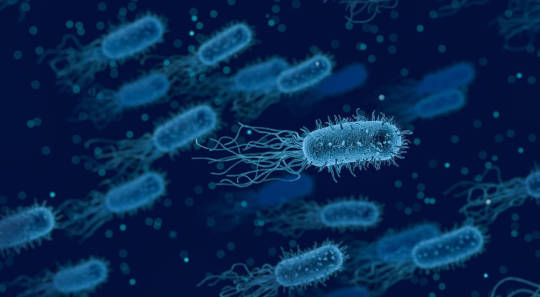
- By Nuadox Crew -
EPFL and Vrije Universiteit Brussel researchers have developed a low-cost and quick antibiotic sensitivity testing (AST) method that can detect resistance in bacteria in two to four hours.
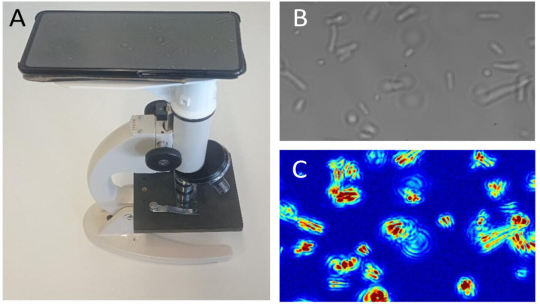
Image: A. Optical Nanomotion Detection based antibiotic susceptibility test setup: a low-cost optical microscope and a mobile phone are sufficient. B. E. coli bacteria optical image. C. The same field of view as in B, but with false colors that highlight bacterial displacements: red indicates high amplitude motion, blue indicates no displacement. Credit: Ines Villalba (EPFL).
The method, named optical nanomotion detection (ONMD), involves monitoring the nanoscale vibrations of single bacterial cells before and after they are exposed to antibiotics.
It requires no attachment or labeling of bacteria and only needs a basic, conventional optical microscope, a camera or mobile phone, and dedicated software.
In less than two hours, the researchers were able to detect the antibiotic sensitivity of various bacteria (instead of the current 24 hour period for the most common germs and one month period for tuberculosis).
--
Source: Ecole Polytechnique Fédérale de Lausanne (EPFL)
Full research: Villalba, Maria I. et al, Simple optical nanomotion method for single-bacterium viability and antibiotic response testing, Proceedings of the National Academy of Sciences (2023). DOI: 10.1073/pnas.2221284120
Read Also
New device offers faster way to detect antibiotic-resistant bacteria
#antibiotics resistance#antibiotics#medtech#health tech#imaging#health#medicine#biology#bacteria#microscope
0 notes
Text
Sega Saturn - Dream Generation
Title: Dream Generation / ドリーム・ジェネレーション ~恋か? 仕事か!?…~
Developer: Reindeer (Ecole Software Corporation)
Publisher: NCS Masaya
Release date: 30 July 1998
Catalogue No.: T-2511G
Genre: Romance Job Simulation


Typical love adventure game here from NCS Masaya and Ecole. Yes, that Ecole who made Death Crimson. Presentation is very important in a game like this so I'm happy to say that Dream Generation passes with flying colors, as they say. Gameplay wise there's not much to it. Go around the city visiting places trying to make each other happy in the hope that one day you will get married, have a load of kids, grow old and complain about everything then finally die. The End.
Oh, yeah, I forgot to mention that Dream Generation is actually pretty nice for a Love Simulation. Still, that doesn't mean it's going to appeal to more than 1% of this page's readers.


youtube
2 notes
·
View notes
Audio
Melty Blood: Actress Again (メルティブラッド アクトレスアゲイン) Platform: PC, Arcade, PlayStation 2 Developer: Type-Moon, French-Bread, Ecole Software
2K notes
·
View notes
Photo

under night in birth exe:late[cl-r] Cover Art
more resolution Here
#under night in birth#under night in-birth exe:late[cl-r]#hyde kido#linne#merkava#waldstein#orie#phonon#yuzuriha#gordeau#chaos (under night in birth)#nanase#mika returna#erika wagner#gaien ekindu#londrekia#french bread#ecole software#arc system works#aksys games#evo 2019#2020#ps4#sony playstation#nintendo#nintendo switch#cover art#sankaku channel
20 notes
·
View notes
